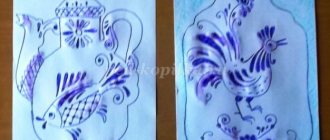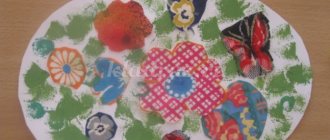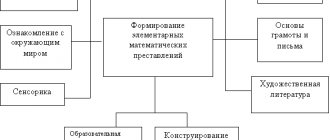What do people do in the fall? What do people do in the fall?
Hello, dear visitors of our blog!
The month of August is coming to an end, and with it summer. And we are gradually moving to the theme “Autumn”. Let's start with a new post about what people do in the fall and how to tell your child about it. A presentation on this topic will be released a little later.
In autumn, people have a lot of worries and a lot of work. After all, autumn is harvest time.
It is in the fall that many fruits and berries ripen in the gardens - plums, apples, pears, rowan berries, wedges and others.
The harvest is underway in the fields. Bread is harvested with special machines - combines.
And vegetables ripen in the garden - beets, carrots, potatoes, cabbage, zucchini, peppers and so on. You need to have time to collect the entire harvest from
vegetable gardens, orchards and fields, and prepare it for long-term storage in winter.
In autumn, many people flock to the forest for autumn gifts - mushrooms and berries. The following mushrooms ripen in the forest: honey mushrooms, boletus, boletus, porcini, and russula. And berries - cloudberries, lingonberries, cranberries.
In the fall, it’s time for housewives to prepare fruits, berries, vegetables and mushrooms for the winter. They ferment, salt, dry, preserve,
they freeze - in a word, they make supplies for the long winter and spring.
And in the fall you need to prepare the soil in the fields and gardens for winter. Before spring, the soil must rest - it is dug up and useful substances - fertilizers - are added. And they do this just before winter, in order to prepare the land for spring planting and reap a good harvest next fall.
Also, the plowed soil will freeze well during the winter and in it
More harmful insects and weeds will die.
Did you know that in the fall they not only harvest crops from fields and gardens, but also plant new plants - garlic, parsley, winter rye and wheat, etc.
It is better to replant seedlings of trees and shrubs in the fall.
Also, in the fall, people clean their yards and streets - after all, so many leaves fall from the trees in the autumn. And the tree trunks below are whitened with lime so that in winter the hares will not strip the bark from them.
There are so many interesting things you can tell your kids about what people do in the fall.
You can download an illustrated presentation with this text here.
Sincerely. Elena Medvedeva.
What kind of crop is harvested in the fall? Autumn work in the garden at the dacha: harvesting and tillage
The weather in September is still quite warm and allows you to collect the remaining harvest at the dacha. At the beginning of the month, potatoes are dug up, tomatoes, sweet peppers, and eggplants are collected. Then comes the turn of carrots and beets. At the end of the month they begin collecting zucchini, pumpkin and cabbage.
Dig it up in dry weather, otherwise wet tubers will not be stored well. Seed specimens are placed in the sun for several days so that they turn slightly green. Solanine formed in tubers is a toxic substance; it repels rodents, destroys fungal infections and allows you to preserve potatoes until spring. The rest of the harvest is removed immediately to storage rooms, since tubers that have turned green in the sun cannot be eaten.
Tomatoes must be removed from the bushes before the air temperature begins to drop below +5°C. If the fruits have not yet ripened, they are placed in a box, layered with paper towels, and covered with paper. The optimal air temperature for storage is 15 - 18°C.
A sign of ripening carrots is the yellowing of the tops and the appearance of hairs on the root crop. Only whole specimens are suitable for storage, so vegetables should be removed from the ground with caution. The tops are cut off immediately. Root vegetables are not washed, but only ventilated. For storage they are placed in boxes with sand or sawdust.
The best time to harvest beets is the second half of September. By this time, the root crops reach the desired size and accumulate a sufficient amount of useful substances, and the tops begin to fade. Vegetables without damage are selected for storage. The tops are not cut off completely, leaving about 1 cm. It is best to store beets together with potatoes.
To determine whether cabbage is ready for harvesting, you need to squeeze the head of cabbage. If it is elastic and does not press through, you can cut it off. The upper leaves are removed, leaving a stalk of approximately 2-3 cm. Small, dense heads of cabbage of light color are stored well.
After harvesting, the area is cleared of tops. It should be borne in mind that the tops of potatoes, tomatoes, cucumbers, peppers and eggplants are destroyed immediately. It cannot be used to further fertilize the soil in the form of compost. Closer to autumn, many leaves are affected by a disease such as late blight, and the ground may become contaminated.
What kind of work do people do in the field in the fall? Autumn fertilizer.
Autumn work in the garden and vegetable garden necessarily includes the application of fertilizers and various nutritional supplements. At different times, plants in the garden need different ratios of nutrients. In autumn, increased levels of phosphorus and potassium are required. These macroelements contribute to good ripening of wood, the accumulation of substances necessary for overwintering and a good spring start, have a positive effect on root growth and the formation of a future harvest, and increase plant resistance to certain diseases. They are also useful for improving the taste of fruits and their intense coloring.
But nitrogen fertilizing in the fall must be excluded. This element provokes untimely growth of shoots and makes it difficult for wood to ripen. As a result, without having time to prepare for the cold, trees and shrubs are easily damaged even by slight frosts.
Fertilizers can be applied in both liquid and dry form. The fertilizer solution is prepared according to the instructions (the recommended concentration should not be exceeded) and the plants are watered at the roots. Foliar feeding is not carried out in the fall: the leaves at this time are coarse, protected by a dense covering tissue that is practically unable to allow various substances to pass through.
Dry fertilizers are evenly distributed throughout the tree trunk circle, after which the soil is shallowly dug up or loosened. Good results are obtained by applying fertilizers to the holes. To do this, make 3 - 4 holes 20 - 25 cm deep around a tree or bush, the required dose of fertilizer is evenly distributed over the holes, and the holes are buried. Do not make holes too close to the trunk: fertilizers are absorbed only by absorbent roots. They are located approximately along the perimeter of the crown. After applying dry fertilizers, the plants must be watered.
Fertilizers should not be left on the soil surface: potassium and phosphorus slowly move deeper into the soil, and phosphorus is easily absorbed by soil particles, becoming inaccessible to plants.
If the soil in the garden is acidic, deoxidizers (dolomite flour, lime, chalk) are added. It is useful to add ash. It is not only a good deoxidizer, but also a source of ash elements. But first, to determine the norm, determine the acidity of the soil in your garden.
The appropriate doses of the drug are indicated on the packaging. It is advisable to check the acidity of the soil annually, because most mineral fertilizers contribute to acidification of the soil.






